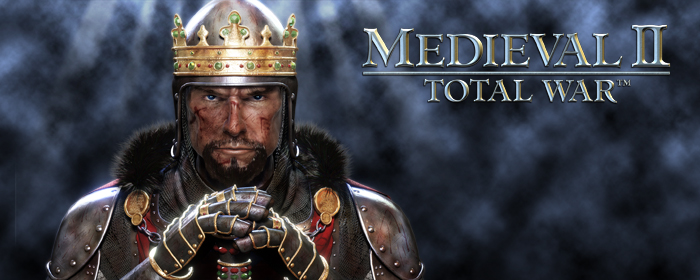About Medieval II: Total War
Take command of your armies and expand your reign. Conquer, destroy, rebuild and improve the cities of the greatest medieval nations of the Western and Middle Eastern world. Employ diplomacy to manipulate your allies and enemies and direct epic and visceral real time battles with up to 10,000 meticulously detailed troops shedding blood on lush 3D landscapes complete with dynamic weather effects in order to re-write history and rule the world.
Spanning four and a half centuries of Western history’s most bloody and turbulent era, Medieval 2 encompasses the golden age of chivalry, the Crusades, the creation and propagation of gunpowder, the rise of the professional army and the discovery and conquest of the Americas. The indirect sequel to 2002’s Medieval: Total War, Medieval 2 is set between years 1080 and 1530 and focuses on medieval warfare, religion and politics in Europe, North Africa and the Middle East.
The expansive single-player campaign allows the player to assume control of a faction and build a civilisation both militarily and economically in order to conquer other factions. There is a short version of the campaign wherein a few faction-specific enemies must be defeated and a long version which requires the player to control at least 45 territories along with faction-specific cities such as Jerusalem or Constantinople. By controlling your faction’s military, economic and social systems turn-by-turn on the large-scale campaign map and besting your enemies either in real-time or computer-determined battles you can spread your influence and prove your supremacy.
Motion-captured battle mechanics have been introduced, taking over from simplistic units of previous titles capable of only one or two attack animations; these are complete with parrying moves and impressive finishing moves, all dependent on the different weapon combinations present. Unit’s individual soldiers can have different features such as faces or shields and upgrades are now displayed on their in-game models – for example, a leather upgrade to a unit will result in the individual soldiers sporting visible leather armour. Improvements such as these contribute to a heightened sense of realism and drama during battles. Agents such as assassins, spies and mercenaries are also available to implement a variety of diplomatic and military strategies both noble and underhand. Multiplayer battles can be fought either in user-defined scenarios or historical battles that represent real battles such as the legendary Battle of Agincourt.
At the beginning of the game there are five factions for the player to choose from including the Holy Roman Empire and the Kingdoms of France, England and Spain. As the game progresses however, other factions that are defeated on the campaign map become unlocked, leading to a total of 17 playable factions. The factions in the game represent their real-life counterparts with varying degrees of accuracy although some nations which may not have been complete kingdoms at the time (such as Spain) have been simplified for easier identification.
Each faction has a ruling family, adult male members of which may become rulers of settlements or military generals. The actions of these characters define their attributes, resulting in traits both positive – such as increased chivalry leading to braver soldiers, as well as negative – such as becoming dreaded for sacking enemy settlements without mercy.
As in previous Total War titles, settlements are the base of military unit production and upgrading abilities, armour and weapons. Settlements can contain a number of buildings, and more are unlocked as you progress further along the tech tree. Each building is specialised for different purposes – for example the recruitment of different unit types, or improved your settlement’s economic prowess. Build through six levels of settlements from modest villages to vast stone fortresses.
Medieval II: Total War was released by Sega and the Creative Assembly on 11 November 2006; it is the fourth game in the Total War series.
